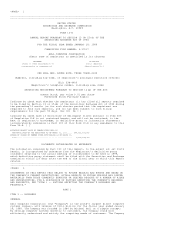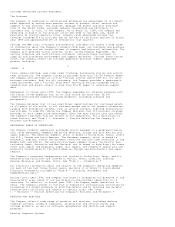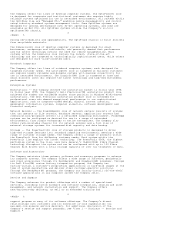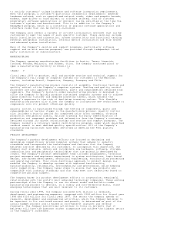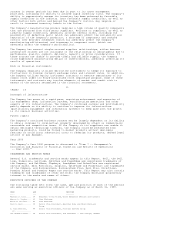Dell 1998 Annual Report Download - page 10
Download and view the complete annual report
Please find page 10 of the 1998 Dell annual report below. You can navigate through the pages in the report by either clicking on the pages listed below, or by using the keyword search tool below to find specific information within the annual report.BACKLOG
At the end of fiscal year 1999, backlog was $170 million, compared with backlog
of $215 million at the end of fiscal year 1998 and $222 million at the end of
fiscal year 1997. The Company does not believe that backlog is a meaningful
indicator of sales that can be expected for any period, and there can be no
assurance that the backlog at any point in time will translate into sales in any
subsequent period.
FACTORS AFFECTING THE COMPANY'S BUSINESS AND PROSPECTS
There are many factors that affect the Company's business and the results of its
operations, some of which are beyond the control of the Company. The following
is a description of some of the important factors that may cause the actual
results of the Company's operations in future periods to differ materially from
those currently expected or desired.
General economic and industry conditions
Any general economic, business or industry conditions that cause customers or
potential customers to reduce or delay their investments in computer systems
could have a negative effect on the Company's strength and profitability. For
example, a softening of demand for computer systems may result in decreased
revenues (or at least declining revenue growth rates) for computer manufacturers
in general and the Company in particular and may result in pricing pressures for
products that the Company sells, which could have a negative effect on the
Company's revenues and profitability.
Competition
The computer industry is highly competitive. The intense competition inherent in
the industry could result in the loss of customers or pricing pressures, which
would negatively affect the Company's results of operations.
International activities
The Company's future growth rates and success are in-part dependent on continued
growth and success in international markets. As is the case with most
international operations, the success and profitability of the Company's
international operations are subject to numerous risks and uncertainties,
including local economic and labor conditions, political instability, tax laws
(including U.S. taxes on foreign operations) and foreign currency exchange
rates.
Product, customer and geographic mix
The profit margins realized by the Company vary somewhat among its products, its
customer business units and its geographic markets. Consequently, the overall
profitability of the Company's operations in any given period is partially
dependent on the product, customer and geographic mix reflected in that period's
revenues.
10
<PAGE> 12
Seasonal trends
The Company experiences some seasonal trends in the sale of its products. For
example, sales to governments (particularly U.S. federal sales) are often
stronger in the Company's third quarter, European sales are often weaker in the
third quarter and consumer sales are often stronger in the fourth quarter.
Historically, the net result of seasonal trends has not been material relative
to the Company's overall results of operations, but many of the factors that
create and affect seasonal trends are beyond the Company's control.
Technological changes and product transitions
The computer industry is characterized by continuing improvements in technology,
which result in the frequent introduction of new products, short product life
cycles and continual improvement in product price/performance characteristics.
While the Company believes that its direct model and asset management practices
afford it an inherent competitive advantage over some of its competitors,
product transitions present some of the greatest executional challenges and
risks for any computer systems company. A failure on the part of the Company to
effectively manage a product transition will directly affect the demand for the
Company's products and the profitability of the Company's operations. In
addition, while the Company has meaningful relationships with some of the
world's most advanced technology companies, continuing technological
advancement, which is a significant driver of customer demand, is largely beyond
the control of the Company.
Inventory management/supplies
The Company's direct business model gives it the ability to operate with reduced
levels of component and finished goods inventories, and the Company's financial


